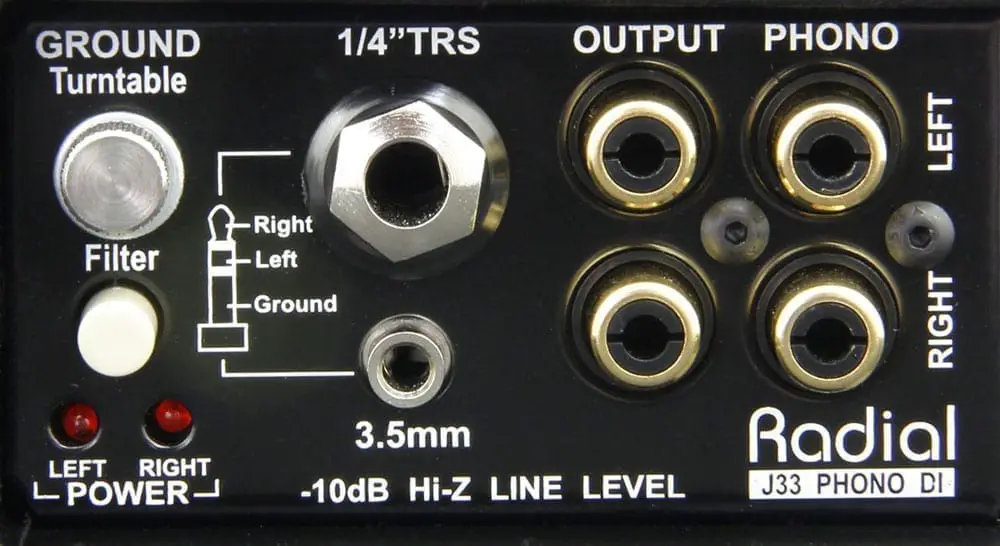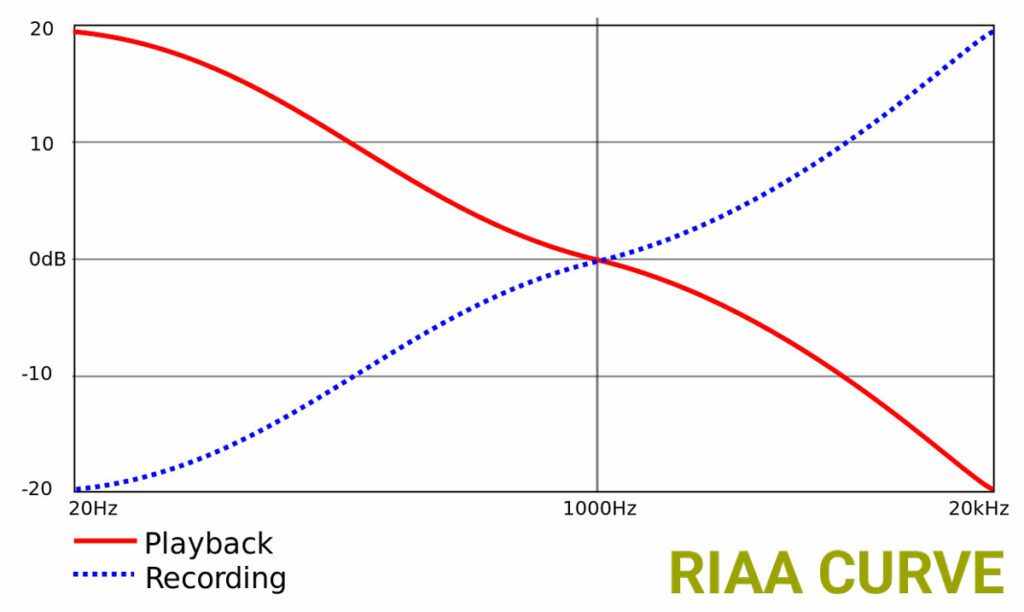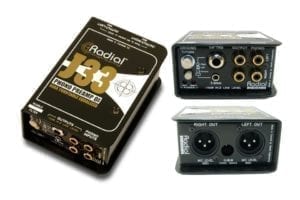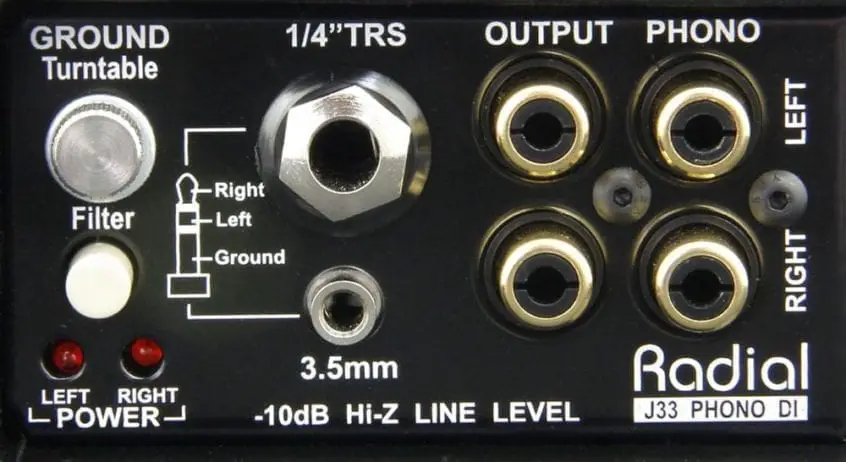If you’re new to the world of vinyl records, it may surprise you to learn that you can’t simply plug your turntable into most sound systems, just as you might do with any other piece of audio equipment. (Or at least not without a phono preamp).
The good news is, you might already own one…
In this article, you will learn if you need a preamp for your turntable, what a phono pre-amp does, and receive our top recommendations for the best budget and higher-end models available.

If you’ve ever tried plugging your turntable into the input marked as “aux” or “TAPE” on your sound system, you’ll likely notice that firstly, the signal is very weak, and secondly, it sounds exceptionally thin and tinny. Before you can fully enjoy those sweet vinyl tones, your turntable signal must first pass through a phono preamplifier (preamp), either built into the turntable itself or as an external unit.
So Do I Need a Preamp For My Turntable?
It depends… If your turntable does not have a built in preamp, and your amp or receiver does not have an input labeled “phono”, then you will need to purchase a preamp for your turntable (otherwise known as a phono preamp).
What is a Phono Preamp?
In a nutshell, a phono preamp (or phono stage) is an audio component that performs two critical functions:
- Firstly, it will amplify the signal level up to a level suitable for the standard AUX input on your stereo.
- Secondly, it will apply an equalization curve to inverse the standard frequency adjustment made during the record cutting process.
Let me explain further…
The first aspect is fairly simple to understand. The signal produced by a record cartridge is very weak; much lower than the standard signal level produced by most other consumer Hi-Fi electronics.
A nominal output level from a phono cartridge is 1 mV (0.001 V). The Aux input on your stereo system requires a signal level of 100 mV (0.1V). To meet the required level, a typical phono preamp will boost your signal by 40 – 50 dB.
The second function requires a little more explaining…
Records are cut with the bass frequencies reduced, and the high frequencies boosted. This equalization helps to permit longer recording times by keeping groove dimensions small, while also increasing sound quality and decreasing record wear.
A phono preamp acts to equalize the signal in an attempt to bring it back — as close as possible — to the frequency response of the master recording. The entire process is referred to as the RIAA (Recording Industry Association of America) equalization curve, which became the general industry standard during the 1950s.

Which type of preamp do I need?
It depends greatly on your budget and cartridge type. Your turntable may have a built-in phono stage, in which case you’re good to go. Also, if your sound system has an input labeled “phono” with a ground screw next to it, this input has a built-in phono preamp stage. However, in most cases, you will find that an external preamp will sound better than your built-in option.
There are two types of phono preamps: those designed to work with moving magnetic cartridges (MM), and units designed to work with moving coil cartridge types (MC). Some preamps will cater for both designs, with a simple switch that adjusts the preamp accordingly.
Moving Magnet
By far the most common cartridge design is moving magnetic. A moving magnet cartridge works by connecting the vibrating cantilever to a set of magnets that then vibrate in close proximity to a pair of coiled wires. The tiny magnets (positioned between the two coils) vibrate, and in doing so, produce a small electrical current.
Moving Coil
The output of a moving coil cartridge is even lower than that of a moving magnetic design, and there requires a higher level of amplification. They work in the opposite way to MM designs by allowing the cantilever to vibrate coiled wires near fixed magnets. Hence the terms “moving magnetic” and “moving coil”.
In any case, check your manufacturers manual to see which design you have. In most cases, it will be a moving magnet cartridge.
Recommended Phono Preamps
Personally, I currently use a Radial J33 phono preamp, which is actually designed more for professional studio and live stage, and with that comes some great connectivity advantages – such as additional outputs for a laptop or recording device. For most home Hi-Fi setups, though, it’s perhaps not the most living-room friendly device in that it’s heavy duty in its construction and design.

For a more living room or listening space friendly alternative, there are plenty of options on the market, ranging from affordable options at the $50 price point to as much as your wallet can stand.
In the affordable camp, the option from ART sounds great for the price, along with options from REGA and ProJect. From here, there are some lovely sounding preamps from Cambridge Audio, some of which cater very easily for both MM and MC cartridges.

If you can stretch beyond the affordable category, brands such as Musical Fidelity offer a feature-rich design that tips into the realm of higher-tier audio at $1000. And yes, it doesn’t stop there; you really can spend as little or as much as you want on this, but that’s a topic for another day. For the average listener with a MM cartridge, a budget of between $200 and $300 dollars (£200 and up) is a great basis from which to start your search for a preamp that will serve you well for many years, and many LPs to come.
(For a complete guide to the best phono preamps, check out our full buyers guide).




I have a Roksan Attessa turntable that I’m trying to run through a Naim Uniti Atom. In doing so I get output but I can’t control the volume (which makes it unusable for me).
There is an active/passive switcher on the back of the Roksan, but I have it on the default. Would changing that make a difference (haven’t tried as it’s a bit inaccessible).
Reading up on it I don’t think I should need a pre-amp, but maybe I do? I’m rather new to a turntable!
Any advice would be more than welcome.
Many thanks in advance.
Cheers
Gary
I have a Teac TN-300 turntable, has a pre amp. I have been using the “On, setting. The “thru” setting seems to be a bypass for the built in amp. As well an external pre amp, BBL fjb xl, a small low voltage box. Is the Teac built in a better choice?
If my turntable has a built in phono preamp do I still plug it into my receiver phono amp?
Hi Boomer. No, you would then take that equalized signal (now line-level) and plug it into an AUX input on your receiver. Hope this helps.
[…] the standard frequency adjustment made during the record cutting process. (Check out our “Why Do I need a Phono Preamp” article to learn […]
[…] Note: To learn more about why turntables require a phono pre-amp—either integrated or external—consider reading our separate article on this topic. […]
[…] Without the phono stage, the signal coming from your phono cartridge will be almost inaudible and very tinny. (You can learn more about how a phono preamp works, and why you need one, by reading our full article on this topic). […]